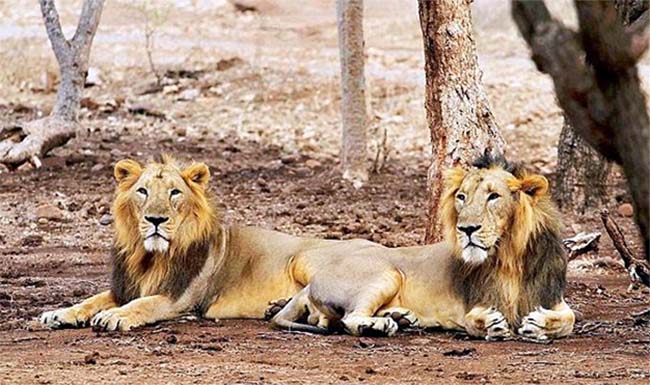Gujarat, Westren India is rich in biodiversity and one of the historical habitats of the majestic Asiatic lions. I t is important to mention that the density of the endangered Asiatic (Indian) lions have increased considerably in the Gir Sanctuary over decades due to excellent conservation efforts by the Gujarat State Forest Department. However, the carrying capacity of the sanctuary and adjoining forested belts have been crossed in the past decade; and there is immediate need of relocating the excess lion populations to suitable habitats. The top predators are not finding enough prey animals in the sanctuary and are often crossing the boundaries due to hunger. The precious animal species are becoming vulnerable and there is no appropriate steps taken by the state government. Several national and international agencies have warmed the Gujarat state government about the serious consequences of a future contagious disease that could decimate the local lion populations or any natural disaster that could wipe out the lion populations like massive forest fires or destructive flood. The state government is greedy to retain the label of the only Asiatic (Indian) lion habitat in Asia for tourism purposes and as such is reluctant to identify suitable lion habitats in other adjoining states for relocating excess lions.
The state government has been jealously guarding its lion populations in a questionable manner that in the past even an Indo-Iran agreement of exchanging couple pairs of Asiatic (Iranian) cheetahs for India in exchange for breeding pairs of Asiatic (Indian) lions for Iran were scrapped. The Gujarat government were reluctant to provide breeding pairs of ions for Iran to keep the tag of only lion habitat of Asia! Now the as the water is flowing over the head and some animals are turning into potential man-eater due to prey deficiency; some animals have been caged to sweep the greater issue under the carpet. Unless swift decisions are made and alternate habitats are identified and some of the lion prides are relocated there could be great danger to the lion populations in the future. There has been reports that due to overpopulation and shortage of pray in the Gir Sanctuary, some of the lion prides here have been pushed towards turning into man eaters making the lion population of lions vulnerable to atrocities by local human settlers in the long term. Hence under all circumstances for successful long term conservation of the Asiatic (Indian) lions alternate habitats are an urgent need.
Gujarat’s success with conservation has been mixed with failures in running efficient captive breeding programs; while successfully running biological parks and natural wilderness area where there is dole of tourism money involved. However, in parts where there are fewer foot falls of tourists due to poor arrangements as well as lack infrastructure; the conservation efforts are questionable. Lack of employment opportunity particularly in the backward, rural and tribal belts areas have been pushing local and indigenous communities encroaching deep inside the forest for daily sustenance impacting both the quality of local forests and the wildlife. Forest fragmentation, over exploitation of local natural resources as well insurgency build up in different forested parts of India has been extending considerable challenges towards conservation of forests and wildlife across India and not just the state of Gujarat.
The challenges of abject poverty in the rural belts needs of India whether it is the case of Gujarat, Rajasthan, UP, Bihar, Jharkhand, Chhattisgarh, West Bengal or Assam need serious introspection for developing a comprehensive conservation plan for the nation. Aggressive insurgency issues in different forested parts of India have further reduced the presence of state forest officials and staffs for security reasons. Coordination and co-operations between state and central forest and wildlife management units together with local people; as well as local, regional, national and international NGOs and conservation agencies need to work together to protect the last remaining wildlife refuges of India. Economic empowerment of local people will be important for the long term success of the conservation efforts in Gujarat as well other Indian states.
Home » Opinion » Conservation Challenges for Endangered Asiatic (Indian) Lions in South Asia
Conservation Challenges for Endangered Asiatic (Indian) Lions in South Asia
| Saikat Kumar Basu

